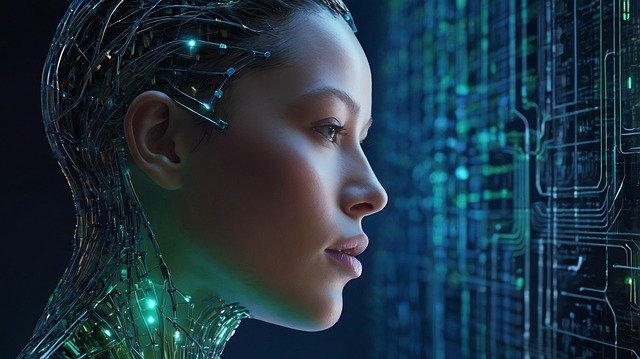Imagine waking up in 2026 to a world where AI handles 70% of your daily tasks at work. That’s not some distant dream—it’s on the horizon, backed by expert forecasts. These 17 trends show how tech is already shifting our lives, from simple app building to mind-reading devices. We’ll cover everything from easy tools that let anyone create software to robots that walk like humans. By 2026, these changes will touch your job, health, and home in ways you can’t ignore.
Table of Contents
Section 1: Revolutionizing Digital Creation and Infrastructure
Low-Code/No-Code Dominance in Application Development
Gone are the days when only coders could build apps. Now, anyone can drag and drop elements to make useful tools. This shift opens doors for small businesses and solo creators alike.
Proliferation of Drag-and-Drop Platforms
Experts predict over 75% of new apps will come from low-code or no-code setups by 2026. Platforms like Glide let you turn spreadsheets into mobile apps in minutes. Bubble handles complex web projects without a single line of code. Microsoft Power Apps speeds up business tools, and OpenAI’s custom GPTs let you craft AI helpers with zero programming. Google’s AppSheet even turns data into apps for teams on the go. These tools cut development time and costs, making tech accessible to all.
Business Process Automation Without Developers
Companies now skip hiring expensive developers for routine tasks. With Google AppSheet, firms automate sales tracking or customer reports right away. This means faster results without tech experts in the mix. Businesses save money and focus on what they do best, like selling products or serving clients.
AI-Infused Extended Reality (XR) Experiences
Virtual reality used to feel stiff and scripted. Today, AI makes XR spaces come alive, reacting to your every move. It’s like stepping into a world that thinks and adapts just for you.
Generative and Adaptive Virtual Environments
AI-powered XR will build scenes on the fly based on what you do. Nvidia leads with real-time characters that chat naturally, holding full conversations. At CES, virtual stores shifted layouts as shoppers walked, boosting sales through smart design. These setups create endless variety, from training simulations to fun games that never repeat.
Next-Generation Immersive Avatars
Meta invests heavily in avatars that don’t just stand there—they respond and improvise. Picture a virtual guide that cracks jokes or answers questions on the spot. This tech enhances remote work meetings or online shopping, making them feel real and personal. As XR grows, expect more immersive escapes from everyday life.
The Maturation of Smart Infrastructure (IoT 2.0)
Cities and factories are getting wired up like never before. IoT devices connect everything, turning dumb objects into smart helpers. By 2026, over 30 billion of these gadgets will hum along worldwide.
Hyper-Connected Physical Systems
Traffic lights in Singapore already tweak timings to ease jams in real time. South Korea’s smart poles check air quality and charge phones at the same time. These systems cut waste and make life smoother. Imagine streets that flow better without you noticing the tech behind it.
Autonomous Warehouse and Logistics Tracking
Warehouses use AWS and Verizon to monitor stock without a single worker checking shelves. Drones and sensors spot items instantly, speeding up shipping. This setup fights shortages and keeps goods moving fast. Businesses see big gains in efficiency, with less error and more output.
Section 2: The New Paradigms of Privacy and Processing Power
Local Processing and Privacy-First AI Architecture
Data privacy rules like Europe’s GDPR and California’s CCPA push AI to stay close to home. No more sending everything to the cloud where it might leak. Instead, your device handles the work, keeping info safe and swift.
On-Device AI Acceleration
Apple’s latest chips run AI tasks right on your phone or laptop, skipping the upload step. Intel’s Meteor Lake processors pack built-in boosters for quick results. This means faster photo edits or voice commands without privacy worries. You get the power without the risks.
Open-Source Local Models
Meta’s Llama 3 runs fully on your hardware, giving strong AI without outside servers. It’s free to tweak and fits personal use. As rules tighten, more models will follow this path. You’ll control your data like never before.
The Arrival of Utility-Grade Quantum Computing
Quantum tech once seemed like pure fantasy. Now, it’s edging toward everyday jobs, solving problems classical computers can’t touch. IBM and others race to make it practical by 2026.
Reaching Critical Qubit Milestones
IBM reached over 1,000 qubits in 2023 and eyes a 1,386-qubit chip soon. Error fixes make these systems reliable for real work. Google, IonQ, and Rigetti join the push, testing bigger setups each year. Progress feels steady, turning hype into hardware.
Real-World Optimization Applications
Quantum could speed up drug design by simulating molecules in hours, not years. Supply chains get optimized too, routing trucks smarter than before. Think faster medicine or cheaper goods— all from this leap. It’s early, but demos show it’s no joke.
Section 3: The Integration of AI into Daily Devices and Workflows
AI-Native Operating Systems: Intelligence Baked In
Your computer’s brain used to just run apps. Soon, the whole system will think alongside you. AI slips into the core, making every task easier.
OS-Level Task Management
Microsoft tests Copilot in Windows 11 to sum up files or rewrite emails on command. No need to jump apps— it all happens in place. This saves hours, letting you focus on big ideas. Your desktop becomes a smart partner.
Anticipated OS Enhancements
Apple plans deeper AI in macOS and iOS, powered by neural engines on device. Expect auto-summaries or image tweaks built right in. Phones and laptops will feel alive, guessing your needs before you speak them.
Wearables Evolving into Proactive Health Companions
Step trackers were basic. Now, wearables watch your body around the clock, spotting issues early. They nudge you toward better habits with smart advice.
Continuous, Non-Invasive Health Metrics
Devices like Oura and Whoop track sleep and stress for recovery tips. New rings monitor blood sugar without needles, and Mavuno builds ongoing blood pressure checks. These tools catch problems quietly, like low energy before it hits. Health feels personal and preventive.
Personalized AI Nudges and Early Illness Detection
AI turns raw data into tips, like “Rest now—your temp’s rising.” Some spot sickness from skin changes days ahead. It’s not just numbers; it’s care that knows you. Wear one, and it might just keep you well.
Augmented Reality Glasses Superseding Screens
AR glasses have hovered on the edge for years. Finally, they’re slim and useful, overlaying info on your view. Say goodbye to fumbling for your phone.
Lightweight, Context-Aware Overlays
Apple’s Vision Pro sparked it, but Meta, Xreal, and Samsung aim for everyday glasses. They add arrows for directions or captions for talks. Light weight means all-day wear without strain. Your world gets info boosts seamlessly.
AI-Driven Information Delivery
AI predicts what you need, like subtitles in another language floating by. Reply to texts or check maps without looking down. It’s like having a quiet guide in your sight. By 2026, screens might fade as glasses take over.
Section 4: The Physical Embodiment of Automation
AI-Enhanced Robotics in Logistics and Retail
Robots roll out to fix worker gaps in stores and shipping. They scan, carry, and navigate solo, using sharp AI eyes. Labor shortages make them a must-have.
Autonomous Material Handling and Inventory
Agility Robotics sends Digit bots to Amazon warehouses for lifting tasks since 2024. Walmart scans shelves in over 1,000 stores with no drivers needed. These machines handle heavy loads, cutting injury risks. Retail runs smoother with less hassle.
AI Vision and Real-Time Mapping
Starship and Kiwi bots deliver food on campuses, dodging people with live maps. AI lets them learn routes weekly, getting sharper each time. No remote control— they’re on their own. Expect more of these helpers in daily spots.
Humanoid Robots Entering Commercial Workflows
Human-like bots move from labs to factories. They walk, grab, and repeat jobs with human ease. Costs drop, so they’re ready for wide use.
Bipedal Robots in Industrial Settings
Figure AI teams with BMW to test Figure 01 in car making. Tesla’s Optimus sorts parts and folds clothes in plants. These two-legged workers fit tight spaces humans use. They boost output without tiring.
Scalability and Cost Reduction
By 2026, some models will cost under a small car’s price. That opens doors for more factories to adopt them. Dexterity improves for real tasks, not just shows. Robots become team members, not novelties.
The Proliferation of AI-Powered Home Assistants
Smart speakers once sat still. Now, they roam and interact, helping with chores or chats. Homes turn into smart nests.
Mobile Home Robotics for Service
Amazon’s Astro patrols houses and aids elders since 2021. It delivers commands or checks rooms on voice cue. This bot adds eyes and ears to your space. Peace of mind comes built-in.
Advanced Tracking and Interaction
Apple whispers of a J595 robot that follows you in calls. In China, showroom bots hand brochures with smiles. Wheels, screens, and arms make them handy. They bridge the gap from voice to touch.
Section 5: The Apex of AI Agency and Content Generation
Autonomous AI Agents Handling End-to-End Tasks
AI chats are out; full workers are in. These agents tackle whole jobs, from plan to finish, without hand-holding.
Self-Correcting Software Engineering
Cognition Labs’ Devin builds sites, fixes bugs, and launches them alone. Watch it code a full app in hours. No human tweaks needed— it self-checks. Developers gain partners, not replacements.
Corporate Process Delegation
Auto-GPT links steps to book trips or sum reports. Firms train agents for hiring or client replies. Delegate a task, get results ready. Work flows freer as AI takes the grunt.
Generative AI Becoming the Default Content Layer
Most content you see will stem from AI by 2026. It crafts words, pics, and videos effortlessly. Creation shifts to a team effort with machines.
Multimodal Model Advancement
GPT-5 and Gemini Ultra mix text, images, video, and sound in one go. OpenAI, Google, and Anthropic lead the charge. Conversations feel rich and real. AI handles it all without breaks.
Commercial Content Production Tools
Adobe Firefly edits images quick, while Runway ML crafts videos. Eleven Labs clones voices for podcasts in seconds. Pros use these for fast, pro results. Your next ad or tune might start with AI.
The Horizon: Brain-Computer Interfaces (BCIs) Moving to Market
BCIs link brains to machines directly. Early tests show thoughts moving cursors or words. It’s the boldest shift yet.
Early Human Implant Trials
Neuralink implanted its first chip in 2024, letting a person guide a mouse by mind. Trials prove it works without wires. Steps feel small but huge. Disabilities lose some power over lives.
Restorative and Communication Applications
Synchron and Precision Neuroscience build gentler devices for paralysis aid. Stroke patients control arms or type via thought in tests. Communication flows for those silenced. The future heals through pure intent.
Conclusion: Navigating the Unfolding Technological Future
These 17 trends blend AI into hardware, software, and robots, hitting reality by 2026. From low-code ease to brain links, change speeds up work and life. Automation reshapes jobs, letting you focus on creativity over repetition. Personal tech, like health wearables and smart OS, tailors to your needs for better days. Prep by spotting trends in your field—start with low-code trials or robot news. What trend excites you most? Dive in now to stay ahead.
Check: The 10 Stages of AI Evolution: From Rule-Based Systems to Godlike Intelligence


